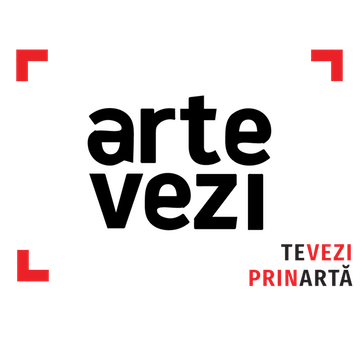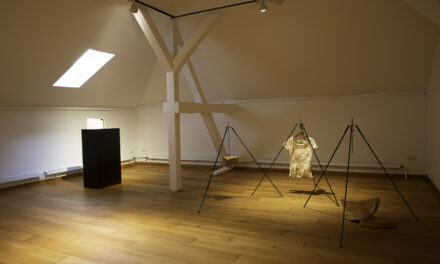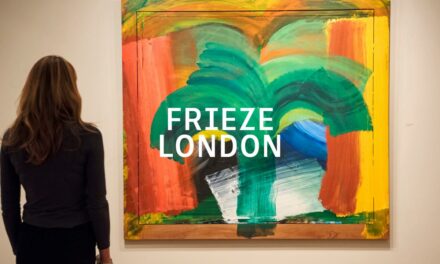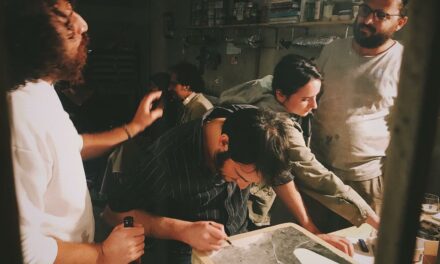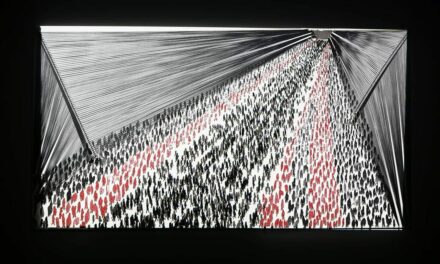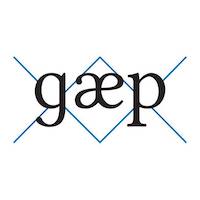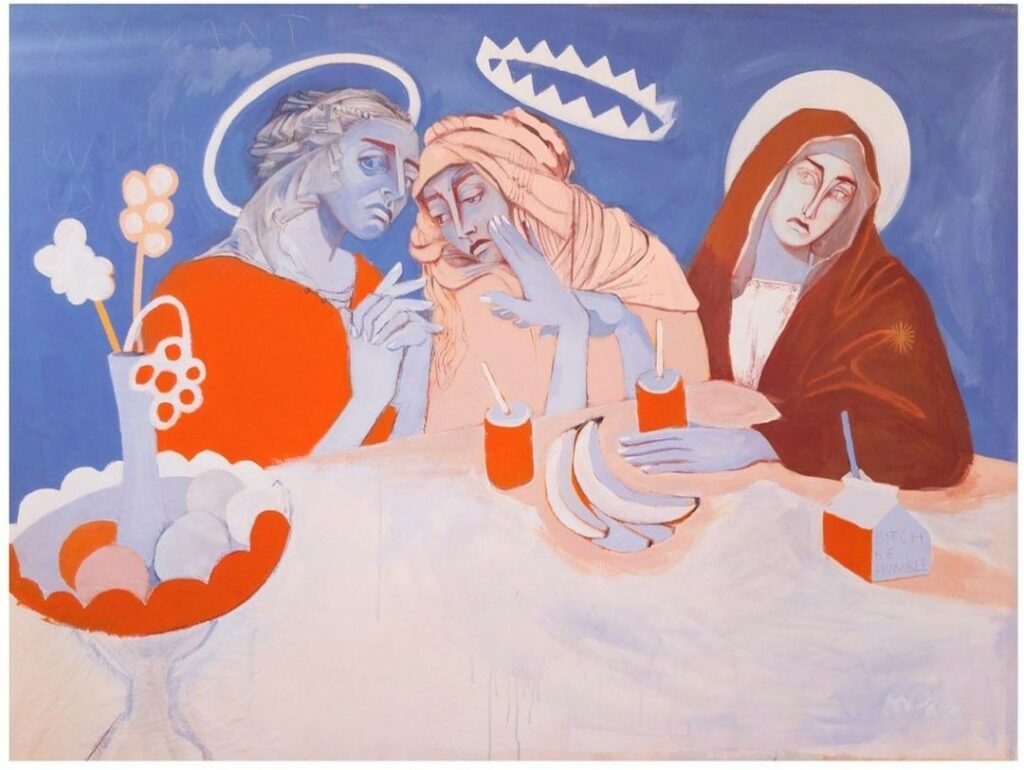
Magdalena Paz, 2021, courtesy to the artists and the Evangelical Cathedral from Berlin
The Berlin Evangelical Cathedral breaks every standard. It hosts until the 15th of August the „Upgrading Maria 2021”group exhibition. Organized by the international art collective Stella Maris, the exhibition was conceived by Igor Zaidel, artist and curator. It promotes 13 artists, 13 unique representations of the maternal religious figure – Mary. An opening to contemporary art in a religious context.
When talking about religion, today’s Europe still conceives its spiritual model through Christianity. The entities’ representations were from the beginning part of those religions’ edifices. Religious art, although still subject to canons even today, keeps ornating Christian heritage. What about iconoclasm ?
With „Upgrading Maria 2021”, the Stella Maris collective explores, by artistic means, the Madonna’s image in our strongly secularized world. Using painting, poster art, installation and video, the artists investigate contemporary forms of expression in the field of tension between practiced religion and post-religious worldview.
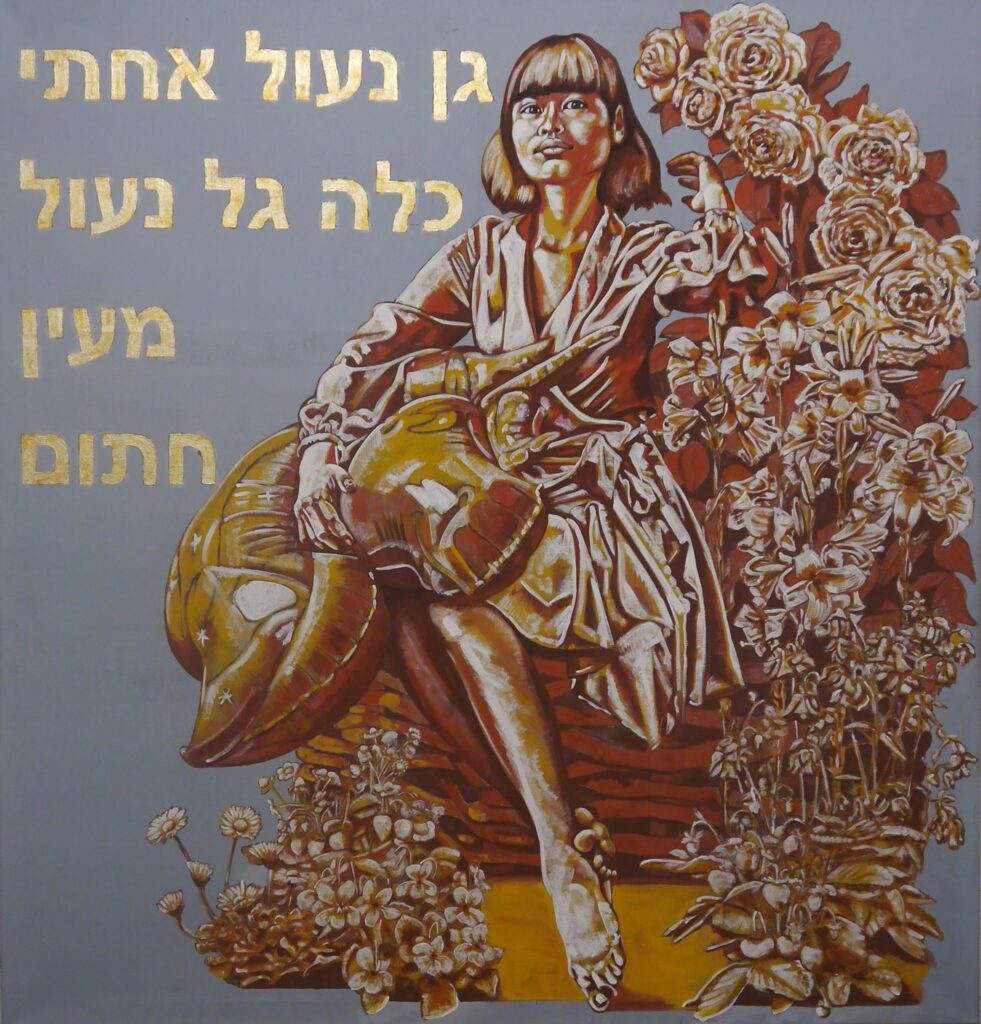
Samuel Wiesemann, 2021, courtesy to the artists and the Evangelical Cathedral from Berlin
”Evangelicals are comfortable with nudity, gays, transgender people and other wonders of the modern urban creative class”, says Igor Zaidel, interviewed by Elena Ghițoiu. The Evangelical Cathedral from Berlin accepted to show paintings of an atypical Virgin Mary, although in their eyes this figure belongs to the Catholic cult. Transformed into an exhibition space, the Cathedral included the event in the social life led by the small community that gathered around it. Situated in a multicultural zone in Berlin, where many neighbours belong to Muslim faith, the exhibition wants to gather as many visitors as possible, no matter their origin, religion or sexual preferences.
The curator tells us this place of retreat is one of the few that still allows people to be together under the same roof. In the era of new liberalism, where every place is private and privatized, public spaces tend to disappear. „Upgrading Maria 2021” seems to be a free space, a refuge where a dialog between cultures can take place. This idea is even more present when we look at Samuel Wiesemann’s painting. In that piece, an Asian Mary is sitting with a balloon in her arms, between a bush of roses and a Hebrew inscription from the Torah. Farther away, Magdalenie Paz sits three Maries side by side like the three graces : Orthodox, Catholic and Protestant. The three of them are chatting, looking doubtfully at a vase of flowers.

„Upgrading Maria 2021” exhibition view, courtesy to the artists and the Evangelical Cathedral from Berlin
”But then they realized that it was a great opportunity for them to show that they are cooler than Catholics since they can show Mary in their church and they were very happy. ” (Igor Zaidel / Artist & Curator)
„Upgrading Maria 2021” implicitly makes a reference to the Catholic and Protestant conflict, which took place during the Thirty Years War. This war, ending with the Lübeck armistice in 1629, shaked all Europe, bringing autonomy to the German Protestant states. In exchange for this condition, Christian IV, Duce of Holstein, kept Catholic control on the Norway-Denmark territory.
The opposition between “sacred” and secular painting nowadays only exists in the context of some religions. The first Christian paintings were hidden in catacombs, banned by the Roman empire. What came to be Byzantine art afterwards, was in fact considered to be a heresy in its early days. The representation of divinity is not part of the Evangelical cult, which is a pregressive religion established in 1846. Just like the prophet Allah’s representation is banned in the Muslim religion, the same goes for the Virgin Mary’s, which is only acceptable inside a church under certain conditions. But is it really the case?
Many occidental religious buildings from Europe or The United States show an interest towards contemporary art today. Some of them have lost their primary function of prayer and became part of the cultural heritage, transforming themselves in museums. It is the case for the Budapest Kiscelli museum. Former monastery in the 1800s, the construction was given to the use of art. It became the Municipal Photography Gallery, and keeper of the Contemporary Collection for the History of Budapest City. In the United States, artists like Bob Bass are welcome to exhibit in the Grace Chapel’s Gallery, in Lexington.
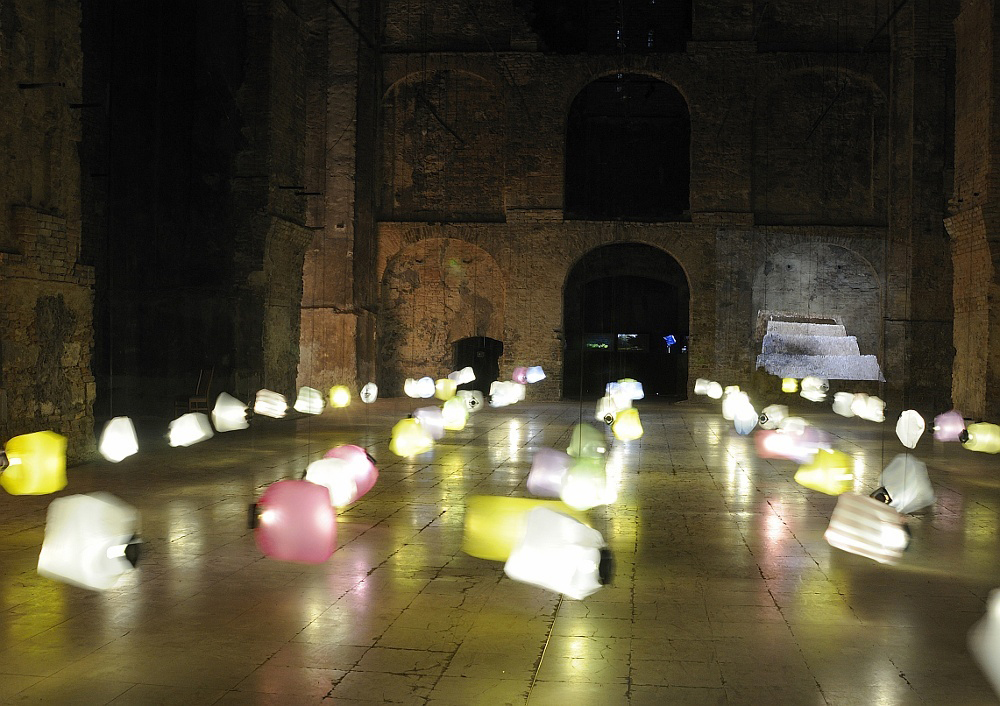
Kiscelli Museum – Budapest, Courtesy of Koroncz
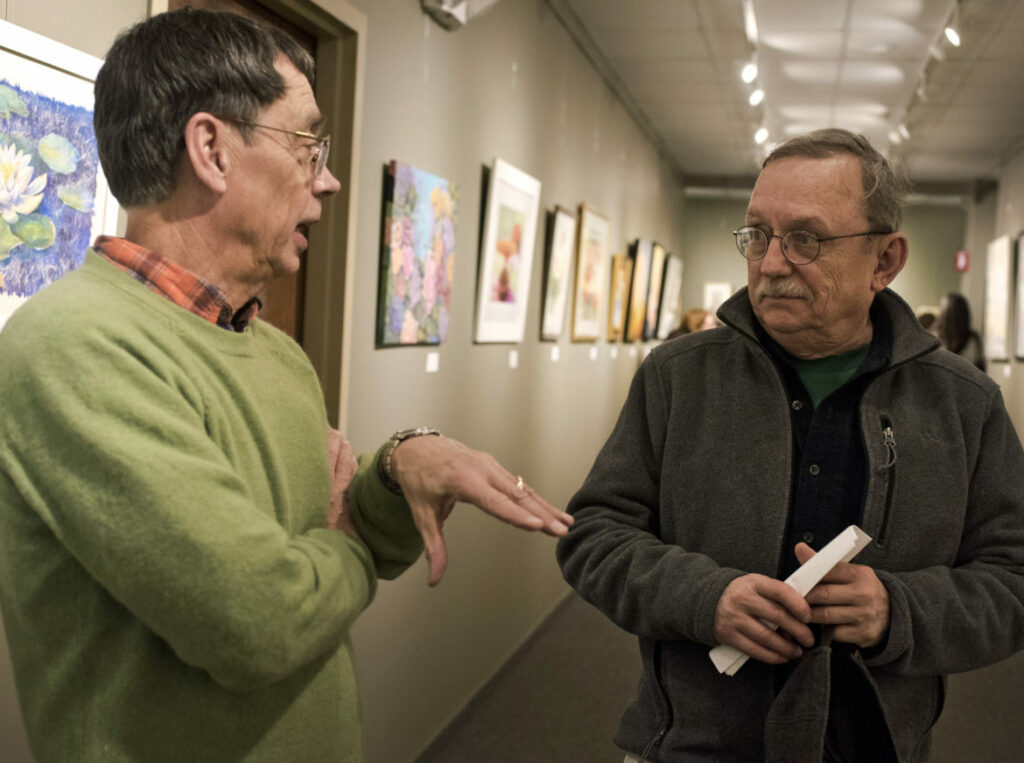
Photographers Bob Bass of Bedford, left, and Bob Bicknell of Groton mingle during the “Flower Power” opening reception at the Grace Chapel Art Gallery in Lexington, Mass. on Saturday, March 18, 2017. Photo by Christine Hochkeppel
Artists:
Agnieszka Borkowsa, Larisa Catano, Charlotte Dorn, Maria Koroleva, Maria Marshall, Magdalena Paz, Bettina Semmer, Friederike Wesser, Oliver O.Rednitz, Rais Khalilov, Daniel Steiner, Samuel Wiesemann, Igor Zaidel
Stella Maris and Artists’ websites:
https://www.facebook.com/AgnieszkaBorkowskaArt/
https://www.behance.net/seeyousoon
https://www.mariamarshall.com/
https://www.instagram.com/p/CRXdVbpFap4/
https://www.instagram.com/freddy_goes_to_hollywood/?hl=fr
https://sbw.berlin/en/another-painting-adorns-our-stairway/
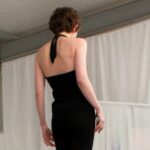
Stanca Soare / Vizual artist & foreign news editor : After graduating from the National Superior of Fine Arts from Bourges, I am presently collaborating with Artevezi for the Satellite 01001 column, for which I conceive articles on social and artistic subjects, about news in the Balkanic and Easter Europe space. I consider that art is part of the present society, no matter the country.
